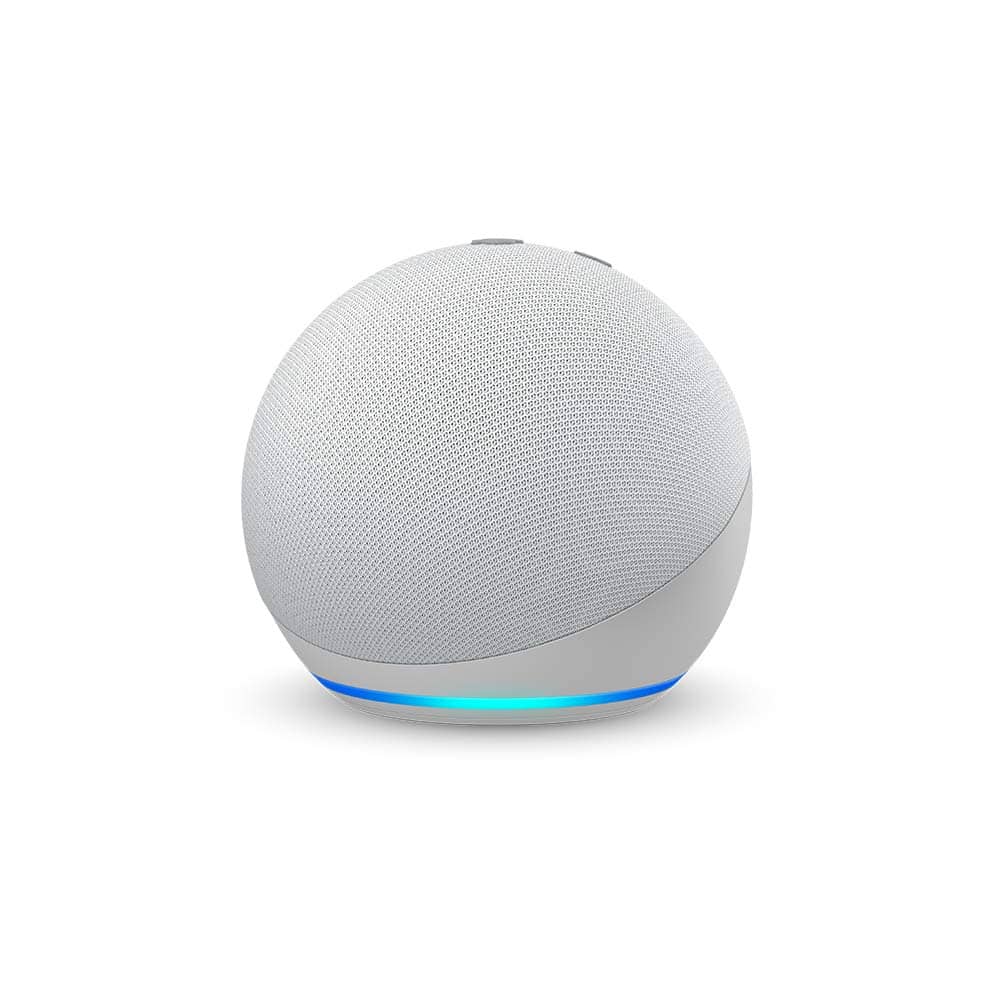Alexa is Amazon’s voice assistant, and she’s quickly becoming an indispensable AI companion in our homes, computers, and vehicles.
Amazon’s voice assistant’s basic concept is straightforward: you ask questions, issue commands, and receive answers. However, its features are surprising in scope. It is where our Alexa guide for Amazon comes in handy.
We’ll go through the fundamentals, such as how to set up your Alexa system, what you can do with it, and whether or not you need to pay, as well as more advanced features, including connecting other smart home devices and downloading skills.
What does Alexa have to offer?
Because of Amazon Echo speakers’ success, many people are jumping on board – just to wonder, “What can Alexa do?”
The joy of the first few weeks is experimenting and being pleasantly shocked. However, here’s a quick reference guide to using your Alexa speaker.
- Listen to radio stations
- Listen to music from Spotify, Apple Music, and other services.
- Listen to podcasts
- Use timers and alarm clocks.
- Receive customized news reports
- Use the internet to ask questions
- Use voice to control the smart home devices
- Assemble a group of smart home devices that can all be controlled by a single order.
- Make phone calls to people you know.
- Home-to-home intercom between Echo speakers
- Have fun with games
- Listen to soothing music or ambient sounds as you sleep (and toggle off automatically)
- Increase the number of layers in your smart protection scheme.
The Amazon Echo smart speaker is most commonly used to listen to radio stations, play music, set timers and alarms, and monitor smart home devices such as smart lights, wired thermostats, and appliances.
Alexa will, of course, scan the internet and provide instant news updates, weather forecasts, sports scores, and other information. It’s a device that can be used in a variety of ways.
Alexa Calling and Drop-In are two excellent ways to keep in contact with those in your home by using your Alexa gadget as an intercom from room to room or even house to house. And new Alexa features are constantly being introduced.
With their screens, the Amazon Echo Show and Echo Spot will show security cameras and let you check who’s at the door.
The only things you should know about payments are that connected subscription services (like Spotify Premium) will still require payment for full support, and you can shop using your Echo mic.
How to get your Alexa speaker up and running
It’s fairly simple to have your Amazon Alexa speaker set up and ready to use. Simply obey the measures below.
This method will work with the most common Amazon Echo and Echo Dot speakers. You must plug in Echo Show machines, such as the latest Echo Show 10, and follow the on-screen instructions. However, you’ll also need the Alexa smartphone app.
#1. On the smartphone or tablet, download the Alexa app. It’s available on iOS/Android, and if you own one of Amazon’s own devices, there’s even a Fire OS version. You’ll need to log in with your Amazon ID (which we assume you already have or will need to create), and this will become your Alexa account. Naturally, if you have an Amazon Prime account, you can use it for the setup.
#2. Go to More > Add a Computer > Amazon Echo in the app. Select the sort of Amazon Echo you want to install.
#3. Now, plug in your Alexa computer and wait. It will go through its course, beginning with a spinning blue light and an orange light.
It means it’s in pairing mode, so enter your Wi-Fi settings in the Alexa app. At set up, you can choose to have these saved and used by future speakers.
#4. To bring your speaker back into pairing mode, simply press the button on the left.
#5. You’re ready to go – just say “Alexa” and check out the list of cool questions below.
Read: 6 Best Universal Remotes for Amazon Firestick
Using Alexa’s latest app
The Alexa mobile app serves as a conduit between you and Alexa, and it’s here that you can customize your experience.
The Alexa app was updated in July to make it more useful; previously, you could only adjust items like smart home devices, schedules, or signing into services using the Alexa app.
Home
The new Home screen has been completely overhauled to make it more functional. You can now talk to Alexa by pressing the top button, which is handy if you want to run a routine when you’re not near a smart speaker. Then there’s a list of recommendations, ranging from regularly played media and radio stations to lists and shopping, as well as quick links to items like Alexa routines.
Communicate
This tab allows you to easily call Alexa devices in your house, as well as those of friends and family. You can also make calls, build Announcements (which is handy if you’re not at home), and display the cameras of compatible devices.
Play
The Play tab is where you’ll find media from Alexa, which will be a blend of common outlets. It could be TuneIn radio stations, Spotify playlists, or Amazon Music tracks – all in one place.
It’s not the most important tab – you should just ask Alexa or use your regular apps – but it’s a good way to keep track of what you’ve listened to in one place.
Read: 12 Best Surge Protectors for Home Theaters
Devices
In terms of the smart home, this is where you’ll find the settings for all of your Alexa speakers, as well as any smart home devices you’ve connected to the ecosystem.
You can go to individual speakers to manage paired devices, Wi-Fi networks, and location info, manage user groups, and check out Alexa-controlled smart bulbs, plugs, and other devices.
More
More is a new submenu inside the app that replaces the main menu. You can find the following information here:
- Checklists
- Alarms and reminders
- Establishing routines
- Alexa Skills
- Settings
Read: 7.1 vs. 5.1 Surround Sound System: Which is better?
Important Amazon Alexa skills
Alexa uses skills to add extra functionality and communicate with smart home devices, and these are the keys to make your Echo more than just what it comes with.
Consider skills similar to the applications available on your mobile – there is a vast selection to choose from. Alexa skills are the subject of a separate post, but here are five to get you started.
Amazon Story Time
Simply say, “Alexa, ask Amazon Storytime to read me a story,” to get a narrated story from the Amazon Rapids app library and Audible targeted at kids aged 5 to 12.
BBC News
Your flash briefing will now include the most recent global news from the BBC World Service. “Alexa, what’s my flash briefing?” is all you have to say.
Big Sky
It’s the ultimate weather app, with features like “Alexa, tell Big Sky to give me a weather reality” and “Alexa, tell Big Sky to give me a weather fact.”
Spotify
Spotify, the king of music skills for Amazon Alexa smartphones, can be set as the default music destination and play all of your songs.
Apple Music
Apple Music, a newcomer to the pack, is now available as a liveability via Alexa, and you can set it as your default player, just like Amazon Music Unlimited and Spotify.
Amazon Alexa and smart home
Alexa has emerged as the most effective forum for controlling the smart home. The sheer number of supported devices that work well together within its ecosystem makes it a very strong smart home portal. However, you’ll need some smart home gadgets before you can enjoy them.
According to the manufacturer’s instructions, you’ll need to set up most Echo smart speakers, particularly older and cheaper models, then go to the Skills tab within the Alexa app to pair them up.
You’ll need to download the appropriate ability for your computer, sign in, and then give Alexa control of it. The app’s Smart Home segment will then show the paired devices.
Newer and higher-end Echo smart speakers, such as the 4th-generation Echo and the Echo Show versions, can also function as Zigbee smart home hubs, which means they can not only connect directly with certain smart home technology, but they can also save you money by eliminating the need for third-party bridges and hubs while setting up your smart home.
You might also like







